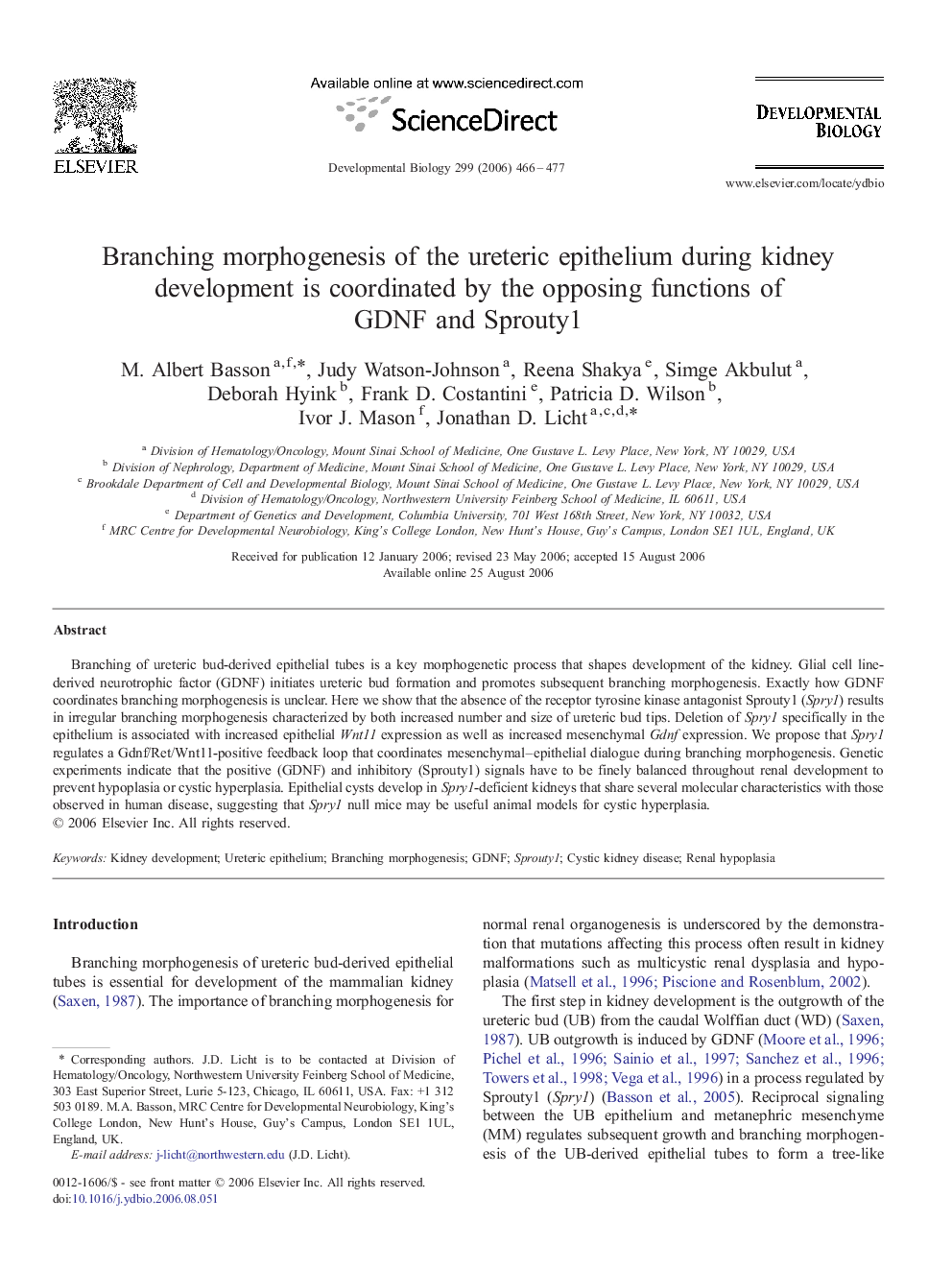| Article ID | Journal | Published Year | Pages | File Type |
|---|---|---|---|---|
| 10933810 | Developmental Biology | 2006 | 12 Pages |
Abstract
Branching of ureteric bud-derived epithelial tubes is a key morphogenetic process that shapes development of the kidney. Glial cell line-derived neurotrophic factor (GDNF) initiates ureteric bud formation and promotes subsequent branching morphogenesis. Exactly how GDNF coordinates branching morphogenesis is unclear. Here we show that the absence of the receptor tyrosine kinase antagonist Sprouty1 (Spry1) results in irregular branching morphogenesis characterized by both increased number and size of ureteric bud tips. Deletion of Spry1 specifically in the epithelium is associated with increased epithelial Wnt11 expression as well as increased mesenchymal Gdnf expression. We propose that Spry1 regulates a Gdnf/Ret/Wnt11-positive feedback loop that coordinates mesenchymal-epithelial dialogue during branching morphogenesis. Genetic experiments indicate that the positive (GDNF) and inhibitory (Sprouty1) signals have to be finely balanced throughout renal development to prevent hypoplasia or cystic hyperplasia. Epithelial cysts develop in Spry1-deficient kidneys that share several molecular characteristics with those observed in human disease, suggesting that Spry1 null mice may be useful animal models for cystic hyperplasia.
Related Topics
Life Sciences
Biochemistry, Genetics and Molecular Biology
Cell Biology
Authors
M. Albert Basson, Judy Watson-Johnson, Reena Shakya, Simge Akbulut, Deborah Hyink, Frank D. Costantini, Patricia D. Wilson, Ivor J. Mason, Jonathan D. Licht,
